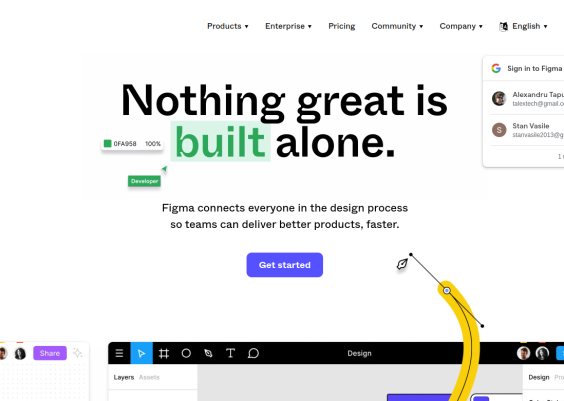In a digital landscape where authenticity holds the key to credibility, verification badges have become coveted symbols of trust and legitimacy. Whether you’re an aspiring influencer looking to bolster your online presence or a savvy user aiming to navigate social media with finesse, understanding how to copy and paste these badges can feel like unlocking a secret door. But why would anyone want to replicate these icons? The answer lies in the complex interplay between perception and reality in our hyper-connected world, where appearances often dictate engagement and opportunities.
Imagine scrolling through your favorite platform and seeing those little blue checkmarks next to names—signifying status, influence, and expertise. It’s more than just a badge; it’s an invitation into exclusive conversations and networks that could propel you forward. In this article, we’ll unravel the intriguing art of copying and pasting verification badges in text form—exploring not only the how but also the ethical considerations that come with wielding such digital power. Join us as we delve into this phenomenon and discover what it truly means to wear a verification badge in today’s virtual society!
Contents
What is a Verification Badge?
A verification badge serves as a digital hallmark of authenticity and credibility in the online landscape. Unique to platforms like social media, forums, and content-sharing sites, these badges are typically reserved for public figures, brands, or organizations that have been vetted by the platform itself. They offer users reassurance that they are interacting with genuine accounts rather than impersonators or fake profiles. In essence, a verification badge acts as a shield against misinformation and enhances trust among users.
However, the significance of verification transcends mere aesthetics; it can influence user engagement and brand reputation. Accounts emblazoned with these badges often enjoy higher visibility in searches and engagements due to their perceived legitimacy. This phenomenon underscores the strategic value of securing a verification badge—not just for celebrities but also for emerging businesses seeking to establish authority within their niche. By understanding this aspect, individuals and brands can better navigate their paths toward recognition while fostering authentic connections in an increasingly crowded digital space.

Importance of Verification Badges in Digital Communication
Verification badges have become crucial in the digital landscape, serving as a trust signal for users navigating through a sea of information. In an era plagued by misinformation and identity impersonation, these badges act as digital beacons that assure individuals they are interacting with legitimate accounts. This reassurance can markedly enhance user experience, leading to greater engagement and fostering a sense of community among verified individuals or brands.
Furthermore, verification badges elevate transparency in communication. They empower users to make informed decisions about whom to follow or trust online. As consumers increasingly prioritize authenticity over mere popularity, verified accounts often enjoy higher credibility and influence – a valuable asset in both personal branding and business strategy. By encouraging accountability, verification badges not only protect individual reputations but also contribute to cultivating a safer online environment for discourse and interaction.
Methods to Copy a Verification Badge
Copying a verification badge goes beyond mere aesthetics; it taps into the psychology of social proof. To effectively mimic such symbols, one must consider the context in which they are being used. For example, platforms like Twitter or Instagram have their unique designs and placement rules for badges, making it vital to adapt your copied version accordingly. Instead of just replicating the visual appearance of a badge, understanding its purpose can enhance authenticity—people respond positively when they see that you truly engage with verified content rather than simply imitating.
Moreover, leveraging tools such as graphic design software can help create a more realistic representation of these badges. Beyond simple copy-paste methods, using programs like Adobe Illustrator or Canva allows users to fine-tune colors and shapes to replicate known verification standards closely. Additionally, employing transparent backgrounds can integrate these badges seamlessly into your content without looking out of place. However, ethical considerations should weigh heavily on any attempt to leverage verification symbols since misrepresentation can lead to severe consequences online and diminish trust in digital interactions.

How to Paste a Verification Badge Correctly
When pasting a verification badge, precision is key to maintaining its intended visual integrity and functionality. First, ensure that you’re copying the badge from a reliable source—such as official websites or verified profiles—to prevent any issues with authenticity. Once copied, pay special attention to the format of your text editor; some may distort the image or alter its sizing upon pasting. For best results, use a platform that supports image embedding rather than simple text fields.
After successfully pasting, consider the context in which you’re placing the badge. The positioning can dramatically impact how viewers perceive it; for example, placing it at the top of your content elevates its importance and reinforces credibility right off the bat. Additionally, using alt text can enhance accessibility for those using screen readers while also providing search engines with valuable information about your content’s legitimacy. Always remember that a well-placed verification badge not only serves as proof but also fosters trust and engagement among your audience, creating an instant connection through credibility.
Tips for Using Verification Badges Effectively
When incorporating verification badges into your text, context is key. Ensure that the badge complements your content and enhances its credibility rather than distracting from it. Strategically place the badge near relevant information or profiles to reinforce authenticity. For example, if you’re showcasing testimonials or statistics, positioning a verification badge nearby can effectively bolster trust among your audience.
Additionally, leverage design elements to make the verification badge stand out without overwhelming the overall aesthetic of your page. Consider using whitespace effectively around the badge and contrasting colors that align with your branding to draw attention while maintaining cohesiveness. Lastly, educate your audience about what the badge signifies; transparency about its origin and significance fosters greater understanding and appreciation for its presence in your material. By doing this, you not only elevate user experience but also cultivate a community rooted in trust and reliability.

Common Mistakes When Copying Badges
One of the most common mistakes when copying badges is failing to maintain the original formatting. Text elements, colors, and sizes often change if they’re not precisely copied from their source. This lack of attention to detail can lead to a badge that looks unprofessional or, worse yet, misrepresents the entity it’s supposed to reflect. To counteract this issue, always preview your pasted badge in different contexts—whether on social media or a website—to ensure it appears as intended.
Another pitfall arises from the misconception that simply replicating a badge is enough for legitimate use. Many people overlook copyright and trademark regulations related to such graphics—an oversight that could lead to legal ramifications. It’s essential not only to copy accurately but also to be aware of ownership rights and usage permissions associated with any verification badges. By understanding both aesthetic and legal aspects, you enhance your credibility while safeguarding yourself from potential pitfalls in digital representation.
Conclusion: Best Practices for Using Verification Badges
Implementing verification badges effectively is key to maximizing their impact. To enhance credibility, place the badge prominently on your website, ideally near elements that matter most to users, such as product descriptions or testimonials. Ensure that it’s easy for visitors to spot and understand its significance at a glance; this could mean using contrasting colors or strategic positioning within your layout.
Moreover, regularly update and review the badges you display. Outdated or irrelevant badges can undermine trust rather than build it. By refreshing your verification credentials frequently and highlighting any new achievements or associations, you demonstrate ongoing commitment to transparency and quality. Lastly, don’t hesitate to couple these visual assurances with concise explanations—contextualizing what each badge means in terms of benefits for the user can turn mere symbols into powerful motivators for action.




